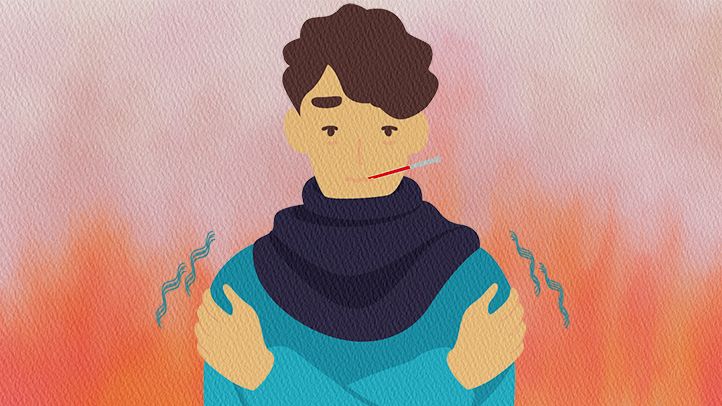Are Upper Respiratory Infections Contagious?
Upper respiratory infections (URIs) refer to a group of contagious illnesses that affect the upper airway. This includes the sinuses, nose, throat, and larynx. Common examples are the common cold, flu, laryngitis, pharyngitis, and sinusitis.
Most upper respiratory infections are contagious to some degree. However, the exact contagious period varies depending on the specific causative virus or bacteria. The characteristics and severity of symptoms also differ among URIs.
How Upper Respiratory Infections Spread
URIs are transmitted from person to person in droplets that are expelled into the air through coughing, sneezing, or simply breathing and talking. These droplets containing infectious pathogens can then enter through the nose or mouth of someone nearby.
Direct contact with contagious secretions can also spread infection. This includes contact with tissues, shared food or drinks, and touching contaminated hands or surfaces.
Some of the most contagious times include the few days before and after symptoms start. However, those who are asymptomatic can still transmit viruses and bacteria.
Most Contagious Upper Respiratory Infections
The common cold is perhaps the most contagious URI. The many viruses that cause colds spread rapidly through respiratory droplets and direct contact. Adults average 2-4 colds per year.
The flu is another highly contagious URI. Influenza outbreaks occur seasonally and can sweep through communities. Proper vaccination reduces but does not eliminate flu contagiousness.
COVID-19 also spreads easily person-to-person via droplets, aerosols, and contact. It remains a problematic pandemic due to high transmissibility rates, including from those with mild or no symptoms.
Other contagious URIs include laryngitis, tonsillitis, mononucleosis, croup, and certain sinus infections of viral, fungal or bacterial origin.
How Long Are Upper Respiratory Infections Contagious?
The contagious period refers to the timeframe when an infected person can transmit the illness to others. This varies based on:
- Type of virus or bacteria involved
- Person's immune response
- Severity of symptoms
- Age and health status
- Medications or treatments used
But in general, URIs tend to be most contagious for roughly 3-7 days from onset of symptoms. Let's look at estimated contagious periods for some common URIs.
Common Cold Contagious Period
Over 200 viruses can cause the common cold. Rhinoviruses are among the most prevalent and contagious.
With rhinoviruses, the contagious period starts about 1-2 days before cold symptoms manifest. Shedding of contagious viral particles peaks in the first 3 days of illness and tapers off by days 7-10.
Some cold viruses like adenoviruses and RSV can shed for weeks after acute symptoms end. However, contagiousness does gradually decrease over time.
Flu Contagious Period
Influenza viruses are typically contagious from 1 day before onset of symptoms to roughly 5-7 days after. Children and those with weakened immune systems may be contagious for longer.
The use of antiviral medications like Tamiflu can reduce the contagious period of the flu by 1-2 days. Flu vaccination also decreases transmission risk.
COVID-19 Contagious Period
For COVID-19, the contagious period starts 2 days before symptoms show and lasts a minimum of 10 days after, provided symptoms improve. The CDC recommends isolating for a full 5 days after symptoms start.
However, those who are asymptomatic can still be contagious. Viral shedding may persist beyond 10 days in those who are immunocompromised.
Other URI Contagious Periods
Here are estimated contagious periods for other common URIs:
- Strep throat - Contagious for 2-5 days if untreated, 24 hours after antibiotics
- Sinus infections - Potentially contagious until infection clears with treatment
- Laryngitis - Contagious during acute symptoms for several days
- Pertussis - Highly contagious in early stages; contagious for 3 weeks if untreated
Contagiousness by Age and Health
Age and health status also impact contagious periods for URIs. Children, infants, seniors, and those who are immunocompromised tend to be contagious for longer.
Children
Young kids are major transmitters of URIs. Their developing immune systems mean viruses can shed at high levels for prolonged periods. Hygiene factors also facilitate spread.
Respiratory droplets from coughs and sneezes also spread farther from children. Daycares and schools can enable rapid transmission between children.
Infants
Babies have underdeveloped immune function until around age 2. Immune responses are also transferred less efficiently from mother to newborn compared to older infants.
As a result, babies often have more severe and prolonged URIs with extended contagious periods. Premature infants are at highest risk.
Seniors
Elderly adults have higher chance of contracting URIs from grandchildren. And due to immunosenescence - the gradual decline in immunity with age - viruses remain active longer.
Chronic diseases like COPD, asthma, and congestive heart failure also hamper respiratory defense mechanisms in seniors.
Immunocompromised
Those with weakened immune systems due to HIV/AIDS, chemotherapy, steroids, and other conditions can shed viruses for 20 days or longer. Susceptibility to atypical infections also increases.
However, vaccines are still recommended for the immunocompromised to provide partial protection and reduce transmission chances.
Preventing Spread to Others
To avoid passing upper respiratory infections to family, coworkers, and others, keep these tips in mind:
- Stay home from school or work during acute illness
- Avoid close contact and shake hands
- Wear a mask in shared spaces or if coughing
- Use good respiratory hygiene and cough etiquette
- Disinfect frequently touched surfaces
- Wash hands frequently and thoroughly
Isolate young children at home as best as possible. Adults should also remain isolated during the most contagious early phases of illness.
Following Public Health Guidance
Adhere to the latest public health guidance on isolation requirements. This provides more specifics on contagious periods and proper protocols based on factors like vaccination status.
Avoiding High-Risk Settings
Skip non-essential visits to hospitals, nursing homes, or other locations with vulnerable individuals during your contagious period to limit transmission risks.
Returning to Work and School
Those who work with high-risk groups like children, seniors, and patients require extra care before returning after a URI. General guidelines include:
- Fever-free for 24 hours without medication
- Symptoms have significantly improved
- 10 days since symptoms started
- No longer needing to cough constantly or blow nose
- Able to safely wear a mask at all times
However, some workplaces may enforce more stringent criteria depending on health risks. Checking with a doctor is ideal to confirm non-contagiousness.
Negative Viral Test
Some facilities require documented negative COVID-19, flu or strep tests before returning if those infections are suspected. This confirms the virus is no longer shedding.
Doctor's Clearance Note
A doctor's note formally clearing you for return based on specific guidelines can provide reassurance. This attests you've met stringent end-of-isolation criteria.
Preventing Upper Respiratory Infections
Beyond proper hygiene, the best protection against contagious URIs is vaccination. Some strategies include:
- Annual flu shot
- Childhood vaccinations like MMR, chickenpox, diphtheria
- Pneumococcal vaccines for seniors
- COVID-19 vaccination series
Getting routine vaccines reduces your changes of getting related URIs. It also minimizes how contagious you become if you do get sick.
Other healthy habits like a nutritious diet, adequate sleep and exercise, stress management, and not smoking also optimize immune function against URIs.
The Bottom Line
Upper respiratory infections like colds, flu, and COVID-19 spread easily through direct contact, droplets, and aerosol transmission. The contagious period typically lasts about 3-7 days but can persist longer in kids, infants, seniors and those who are immunocompromised.
Practicing good respiratory hygiene, isolating during acute illnesses, avoiding high-risk settings while contagious, and getting recommended vaccines are key to reducing transmission risks.
FAQs
How long are colds contagious?
Colds are typically contagious for about 1 week. The peak contagious period is the first 3 days of symptoms. Some cold viruses like adenovirus can be contagious for 2-3 weeks.
When is the flu no longer contagious?
The average flu contagious period is 7 days. Those treated with antivirals are no longer contagious after about 5 days of illness provided fever is gone.
How many days is COVID-19 contagious?
COVID-19 is contagious 2 days before until a minimum of 10 days after symptoms start. The CDC recommends isolating for 5 days after the onset of symptoms.
Are sinus infections contagious?
Bacterial sinus infections are generally not contagious. But viral sinus infections can be during the first 5-7 days of acute symptoms.
How can you prevent spreading contagious URIs?
Wash hands properly, cough/sneeze into elbow, disinfect surfaces, isolate during illness, wear a mask, and avoid high-risk settings when contagious.
Disclaimer: This article is for informational purposes only and does not constitute medical advice. Always consult with a healthcare professional before starting any new treatment regimen.
Related Coverage
Steamy, aromatic baths can temporarily provide congestion and cough relief via essential oils, herbs and other natural decongestants. Learn soothing bath remedies....
Discover over 8 kitchen ingredients that can provide fast effective relief when coughs won't quit. Natural cough remedies like honey, lemon, herbs, steam soothe irritated throats....
Learn about the top homeopathic medicines that can provide relief from chest congestion due to cold, flu, asthma, allergies. Understand the causes and best home remedies....
Find out if you can mix Nyquil and ibuprofen, or if it's dangerous due to acetaminophen overdose risk. Learn safe dosage limits and alternatives for cold symptom relief....
Discover the science behind using onion juice blended with raw honey as a traditional cold and cough remedy. Understand benefits, preparation tips, safety and more....
While blankets don't directly increase core temperature, they can make you feel hotter. Learn how insulation traps heat and affects thermoregulation and fever risk....
Learn if you can safely use Nyquil and Flonase together for a stuffy nose. Discover how these over-the-counter medications work, interaction cautions, side effects, and more....
Coughing puts pressure on the uterus, but doesn't directly cause PROM. However, respiratory infections may increase risks. Learn causes, warning signs, and managing PROM....
Can you safely take ibuprofen and DayQuil together? Experts warn combining them poses avoidable risks like liver toxicity, bleeding issues, and intensified side effects....
Learn whether you can safely take Advil and Dayquil simultaneously. Understand risks like organ damage and high blood pressure and follow best practices on dosing and timing....








